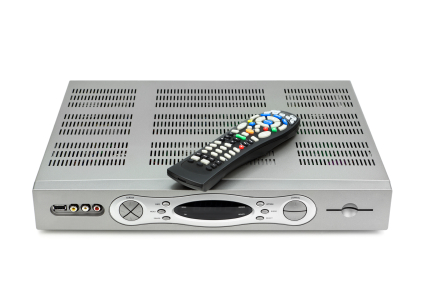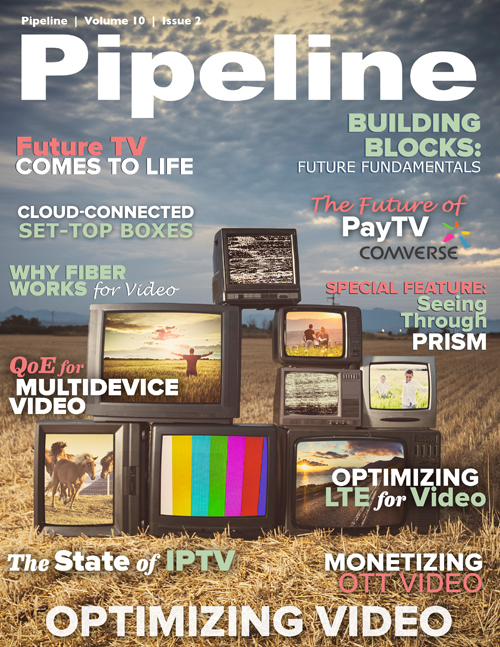Hybrid Set-Top Boxes and the Cloud
By: Jesse Cryderman

The next time you’re at a family party and you want to end an awkward conversation with an annoying relative, start talking about the least sexy thing in the living room: the set-top box (STB). Point to that drab rectangle below or alongside the television with a half-cocked smile and your freedom from small talk is all but guaranteed. In an age dominated by ultrathin, high-definition TVs that make it virtually impossible to set anything on top of them, contemporary STBs, with their large size, clunky programming functionality, LED display, and rudimentary user interface, seem decidedly out of place.
Like a prematurely written Keith Richards obituary, the death of the STB is routinely announced, yet the stalwart supplier of pay TV—in other words, cable, satellite and IPTV (internet protocol television)—ticks on, year after year. Virtually all home-entertainment devices, from Blu-ray players to gaming consoles to televisions, now sport internet connectivity and can serve as the home-media gateway, while smaller STBs from Roku, Google and Apple are spawning the “cord never” generation. Even the US government wants to fast-track the burial of the STB with the AllVid video interface standard, a universal platform that would replace the PCMCIA-based CableCARDs that are required to view pay TV on today’s STBs.
Julius Genachowski, who ended his four-year term as chairman of the Federal Communications Commission (FCC) in May, explained the rationale behind AllVid when it was announced in April 2010 at an open commission meeting. “Just as a shopping mall presents customers with numerous retail outlets, smart video devices would offer viewers a single window into pay-TV content and internet content,” he said, “as well as content that a viewer has already bought or archived.”
But three years later the venerable STB, as iconic as cable television itself, shows no signs of giving up the ghost. Although numerous hardware manufacturers and consumer-electronics retailers have voiced support for a shift to AllVid, the cable industry vehemently opposes the standard, and continues to develop CableCARDs to support new features like multistream recording. Comcast, in fact, announced a new STB just last month at the Cable Show 2013 conference in Washington, D.C.Two factors that have hastened the evolution of the STB, however, also happen to be accelerating its eventual demise.
Evaporating into the cloud
The virtualization of storage and computing power, along with ever-faster transport and distribution, have given rise to the most buzz-worthy tech term in a generation: the cloud. For many applications and services, cloud enablement is table stakes these days, and video is no exception. “The cloud is a game changer,” said Comcast CEO Brian Roberts during his keynote at The Cable Show 2013. “We had an aha moment when we [realized we] could take most of the smarts of your cable box and move it to the cloud ... It allows you to rethink the cable box itself.”
The outcome of this rethinking is the company’s latest STB, the XI3, which Comcast will launch later this year to complement its revamped Xfinity platform, X2. Compared to legacy STBs, the next-gen XI3 is four times faster, three times smaller and uses half the power. In effect, it’s a hybrid solution: some of the requisite STB hardware has evaporated into the cloud, including the hard drive for Comcast’s digital video recorder (DVR), but smarts that support functions like video decoding are still on-premises. In addition to functioning as a supercharged home-media gateway and a portal for over-the-top (OTT) video content, social media and web-based services, the IP-enabled XI3 is capable of handling wireless services such as home security and energy management.





















